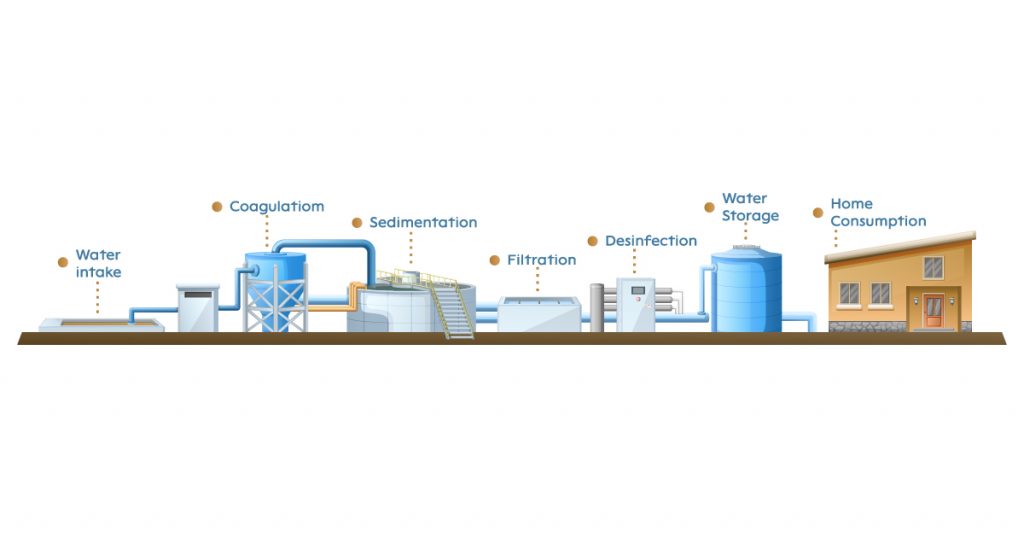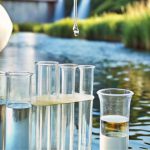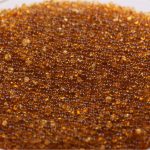Water plays a critical role in a wide range of industrial processes—whether it’s used for cooling, cleaning, product formulation, or steam generation. However, the efficiency and longevity of equipment, product quality, and environmental compliance heavily depend on the quality of water used. That’s why monitoring water quality parameters is essential in every industrial setup.
Understanding the key parameters of water quality and how they affect industrial operations can help businesses avoid costly downtime, ensure compliance with water quality parameters and standards, and promote sustainable practices.
Table of Contents
ToggleWhy Water Quality Matters in Industry?
In industries such as power generation, textiles, food and beverage, pharmaceuticals, and chemicals, water quality directly impacts:
- Equipment performance and life span
- Product consistency and safety
- Energy consumption and operational efficiency
- Regulatory compliance and environmental impact
Using untreated or substandard water can result in scaling, corrosion, biological fouling, and even product contamination. Therefore, assessing and controlling water quality parameters is crucial for reliable and safe operations.
Key Water Quality Parameters for Industrial Use
Here are the most critical parameters of water quality that industries should monitor and manage:
1. pH (Potential of Hydrogen)
- Ideal Range: 6.5–8.5 (varies by industry)
- pH indicates the acidity or alkalinity of water. Water that is too acidic or alkaline can cause corrosion or scaling in pipelines and boilers.
- Relevance: In food processing or pharmaceutical industries, precise pH levels are crucial for product safety and stability.
2. Total Dissolved Solids (TDS)
- Ideal Range: <500 mg/L for most uses; higher tolerance in some industrial processes
- TDS measures the concentration of dissolved substances like salts and minerals. High TDS can lead to scaling, increased conductivity, and equipment damage.
- Relevance: In industries like electronics or power plants, low TDS water is essential for high-purity processes.
3. Hardness (Calcium and Magnesium Ions)
- Ideal Range: 0–75 mg/L (soft), 75–150 mg/L (moderately hard)
- Hard water leads to scale deposits on heat exchangers, boilers, and cooling towers, reducing heat transfer efficiency.
- Relevance: Water softening is often required in textile, hospitality, and laundry-based industries.
4. Turbidity
- Ideal Range: <1 NTU for high-purity applications
- Turbidity refers to the cloudiness or haziness caused by suspended solids.
- Relevance: High turbidity affects filtration systems and may harbor microbial contaminants, especially critical in pharmaceutical and food industries.
5. Chlorides and Sulfates
- Ideal Range: Chlorides <250 mg/L; Sulfates <200 mg/L
- Excess chlorides can cause corrosion, while high sulfates can lead to scaling and an unpleasant taste.
- Relevance: Essential in industries that use water for product formulation or direct contact with metals.
6. Biological Contaminants (Bacteria, Algae, Viruses)
- Microorganisms can thrive in untreated water and lead to biofouling in industrial equipment.
- Relevance: Critical in food and beverage, healthcare, and pharmaceutical sectors. Regular disinfection (chlorination, UV treatment, etc.) is required.
7. Dissolved Oxygen (DO)
- Important for industries relying on aerobic biological treatment processes, like wastewater treatment.
- Relevance: In cooling towers, low DO can promote anaerobic conditions, leading to corrosion and microbial growth.
8. Conductivity
- Indicates the water’s ability to conduct electricity, linked to the presence of dissolved salts.
- Relevance: Helps monitor the purity of water in industries where ionic content needs tight control (e.g., semiconductor manufacturing).
9. Chemical Oxygen Demand (COD) and Biological Oxygen Demand (BOD)
- Measures the level of organic pollutants.
- Relevance: Important for industries discharging wastewater to meet effluent treatment norms and comply with water quality parameters and standards set by local authorities.
Water Quality Parameters and Standards: Compliance Is Key
While water quality parameters for drinking water are set by organizations like the Bureau of Indian Standards (BIS), WHO, and EPA, industrial water quality is often regulated by the Central Pollution Control Board (CPCB) and industry-specific guidelines.
Each industrial application has its permissible range for water quality, depending on the sensitivity of the process. Adhering to these standards ensures:
- Legal compliance
- Extended equipment lifespan
- Safe and high-quality output
- Reduced maintenance and downtime
Ion Exchange: Elevating Water Quality Standards
INDION Lampak, developed by Ion Exchange, is a compact and modular unit tailored to meet the drinking water demands of communities and industrial applications. It combines a pump, static mixer, flocculation, lamella clarifier, gravity sand filter, and chemical dosing systems to produce disinfected water with less than 5 mg/l TSS from feed water containing up to 500 mg/l TSS. Easy to operate and low-maintenance, INDION Lampak can be powered by a diesel generator or renewable energy, making it ideal for regions without electricity. Its lightweight, corrosion-resistant materials and space-efficient design ensure easy transport, operation, and upkeep.
INDION NGIRF is an advanced solution for removing dissolved iron, typically found as ferrous bicarbonate in groundwater. Utilizing a catalytic oxidation process, this filter efficiently reduces iron levels to below 0.3 ppm without the need for chemicals. Designed with convenience in mind, it features a corrosion-resistant Fiber Reinforced Plastic (FRP) pressure vessel and PVC pipes. Pre-assembled and tested, the NGIRF comes equipped with user-friendly valves, offering a reliable and easy-to-operate solution for treating water with high iron content.
INDION Water Potability Test Kit is a versatile tool designed to measure eight essential chemical parameters of drinking water as per the Bureau of Indian Standards. Providing quick and accurate results for pH, total hardness, alkalinity, chloride, fluoride, chlorine, iron, and nitrate, this kit is user-friendly and ideal for semi-skilled individuals, offering an affordable way to ensure safe drinking water.
INDION Packaged Sewage Treatment Plants offer decentralized sewage treatment in a compact, single-tank design that produces low sludge volumes and requires minimal electricity, making them highly cost-effective. Available in capacities ranging from 10 to 100 m³/d, these systems are ideal for smaller needs, while advanced options like Fluidized Media Reactor (FMR), Moving Bed Biofilm Reactor (MBBR), and Membrane Bio-Reactor (MBR) processes are available for efficiently handling higher flow rates in larger applications.
Conclusion
Understanding and managing water quality parameters is not just a technical requirement—it’s a business imperative. Whether it’s for maintaining machinery, ensuring product integrity, or complying with regulations, controlling these parameters of water quality ensures smooth and sustainable industrial operations.







